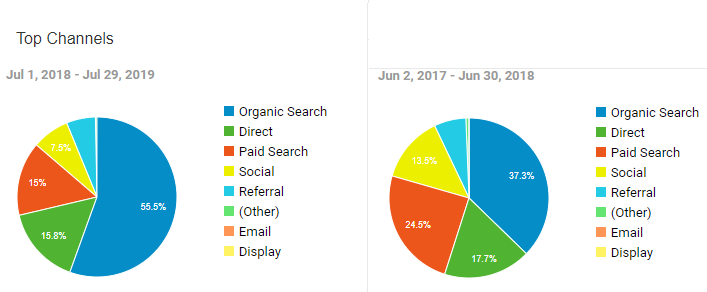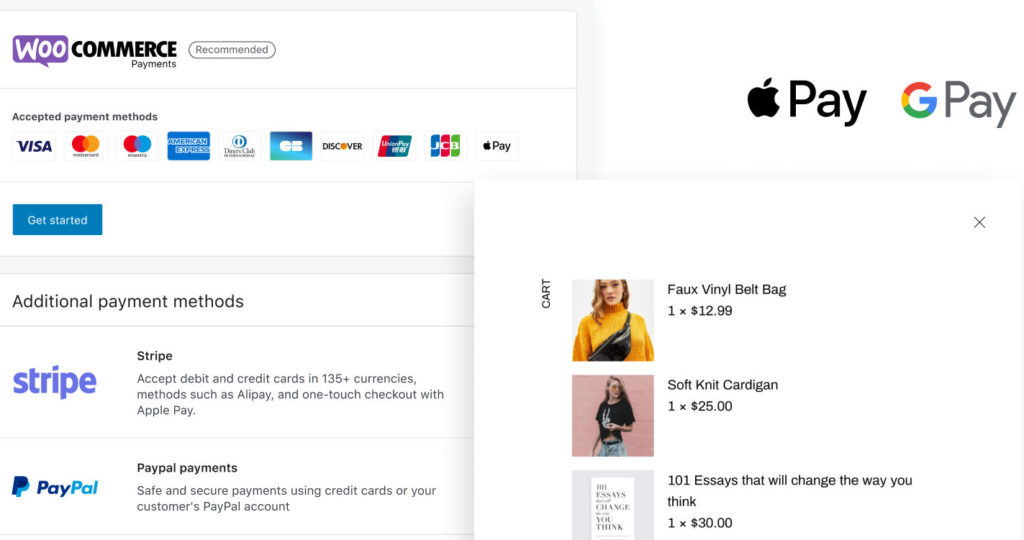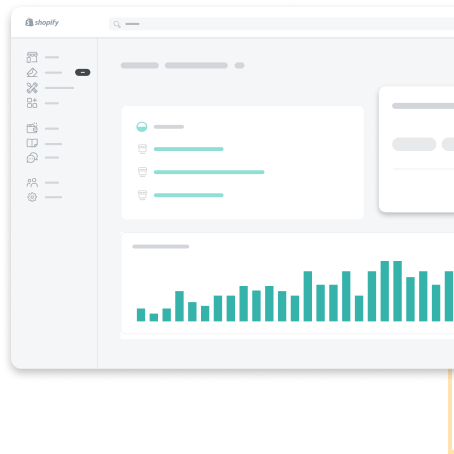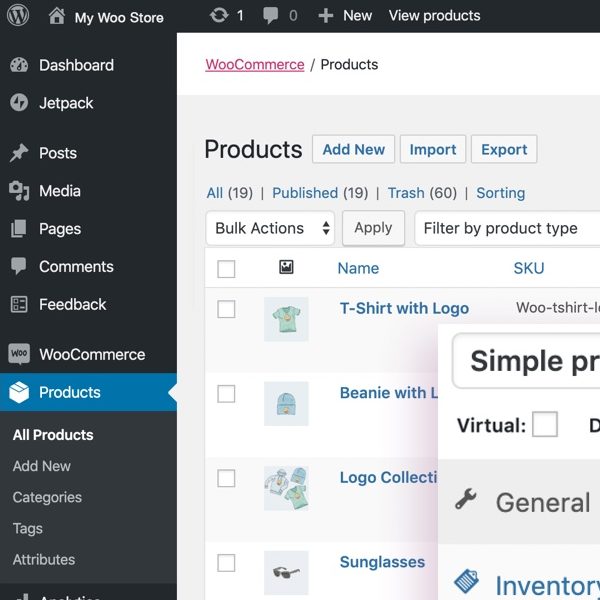Online Store | eCommerce Marketing
As the world of online retail continues to grow, so too does the need for effective eCommerce marketing. To stay ahead of the competition and ensure that customers see your online store, it is important to be aware of the latest trends and developments in e-commerce advertising.
One of the most important changes that has taken place in recent years is the increasing use of mobile devices for shopping. According to a report from Statista, over 60% of global internet users are expected to access the internet via mobile devices in 2022. This trend is likely to continue, meaning that more and more people are using their smartphones and tablets to browse and purchase items online.
As a result, it is essential that your eCommerce marketing strategy takes this into account and focuses on mobile-optimized advertising.
Another important trend to be aware of is the increasing use of social media for shopping. A study by Business Insider found that around two-thirds of social media users said they had used social media to research a product before purchasing it. This highlights the importance of having a strong presence on Facebook, Twitter, Instagram, and TikTok and using social media marketing to promote your online store.
As we move into the future, it is clear that e-commerce marketing will continue to evolve.
Start with SEO or PPC? | We Say Both; At The Right Moment
The problem is that Facebook and Google are only getting more expensive, which can make you feel unsure of whether your brand will survive. We believe that building a community of loyal and repeat customers is the answer.

Email Marketing
Capture your customers’ attention with quality emails, offers and newsletters.
Knowing what matters to them lets you generate products and content to satisfy their needs and bring like-minded new customers to your storefront.
Product Pages With Search Engine Optimization
Product pages are one of the most important elements of your online store when it comes to search engine optimization (SEO). They provide search engines with the information they need to properly index and rank a website.
A well-optimized product page can help your website rank higher in search engine results pages to your online store.
Here are some tips on how to optimize your product pages for SEO:
1. Use keyword-rich titles and descriptions
When creating titles and descriptions for your product pages, include relevant keywords that describe the product. This will help search engines match your pages with relevant searches, increasing the chances that your products will be found by customers.
2. Include high-quality images and videos
In addition to text, product pages should also include high-quality images and videos. This helps give customers a better idea of what the product looks like and how it works. It also helps to make your page more visually appealing, which can help to increase click-through rates from Search Engine Results Pages (SERPs).
3. Use structured data – Schema
Structured data is a code that you can add to your website that helps search engines understand the information on your pages. When it comes to product pages, adding structured data can help to provide additional information about your products, such as pricing, availability, and review ratings. This can help your product pages to stand out in SERPs, increasing the chances that visitors will click through to your online store.
4. Optimize for mobile
With more and more people using mobile devices to search the web, it’s important to make sure that your ecommerce website is optimized for these users. This means creating a responsive design that can adapt to different screen sizes, as well as ensuring that your pages load quickly on mobile devices.
5. Promote special offers, discounts and a loyalty program
If you have any special offers or discounts available on your products, promote these on your product pages. This can help increase conversion rates by enticing potential customers who are price-sensitive.
By following these tips, you can help to optimize your product pages for SEO and drive more traffic to your ecommerce site.
How to build an E-commerce Marketing Plan?
As the owner of an eCommerce business, you know that marketing is essential to driving traffic and sales. But what’s the best way to go about it? How can you create a plan that will maximize your results and help you achieve your goals?
Here’s a look at building an e-commerce marketing plan, with some key tips on creating a strong brand identity and messaging.
Start with Your Mission Statement
Every business should have a mission statement that defines its purpose and goals. This is especially important for eCommerce businesses, which need to be clear about what they’re offering and why it’s valuable.
Your mission statement should be reflected in everything you do, from the products you sell to how you market them. It should be concise and easy to understand so that everyone who sees it knows what your business is all about.
Create a Strong Brand Identity
Your brand identity is how customers perceive your business. It sets you apart from your competitors and makes people want to do business with you.
Creating a strong brand identity starts with having a clear understanding of who your target customer is and what they’re looking for. Once you know that, you can create messaging and visuals that appeal to them and make them want to learn more about your business.
Some important elements of brand identity include:
- Your logo: This is often the first thing people will see when they come across your business, so make sure it’s professional and memorable.
- Your website: Your website should be designed with your target customer in mind. It should be easy to navigate and include clear calls to action.
- Your social media presence: Social media is a great way to connect with potential and current customers. Make sure your posts are consistent with your brand identity and that you’re active in engaging with your audience.

Ecommerce Marketing Strategy: Pricing & positioning
As the owner of an e-commerce business, you need to have a pricing strategy that will allow you to compete with other businesses in your industry. There are a few different approaches you can take, but it’s important to find one that works for your business.
You’ll also need to consider your positioning strategy, which is how you position your business in the market. This includes factors like what makes your products unique and why customers should buy from you instead of your competitors.
Developing clear pricing and positioning strategy is essential to success in the eCommerce world.
As an e-commerce business, you need to have a pricing strategy that is competitive and allows you to make a profit. You also need to position your products in a way that makes them appealing to your target customers.
You’ll need to research your competitors and see how they’re pricing their products. You’ll also want to look at what kind of messaging they’re using and what products they’re selling. Based on this information, you can create a pricing strategy to help you achieve your goals.
Developing a promotional strategy:
A promotional strategy is a plan for how you will market your products or services. It should include the channels you will use, the messages you will communicate, and the call to action.
Develop Compelling Messaging
Once you have a strong understanding of your mission statement and brand identity, you can start developing messaging that will resonate with your target customer. This messaging should be used across all of your marketing channels, from your website to social media posts.
Some tips for creating compelling messaging:
- Use strong headlines: Headlines are often the first thing people will read, so make sure they’re attention-grabbing and informative.
- Tell a story: Stories are a great way to connect with your audience and get them interested in your product or service.
- Focus on benefits: When you’re crafting your messages, always focus on the benefits of your product or service. What will the customer get out of using it? How will it make their life better?
Remove Hesitation With Positive Product Reviews
When it comes to online shopping, potential customers can often be hesitant about purchasing. They may not be able to see or touch the product physically, so they might not be sure if it’s exactly what they’re looking for. This is where product reviews come in handy.
Product reviews are a great way to get what other people think about a certain item. You can see if others have had positive or negative experiences with it, and this can help you make your own decision about whether or not to buy it.
Get Help from Professionals
Building an effective eCommerce marketing plan can be a lot of work, and it’s not something you should try to do on your own.
Digital Marketing Campaigns
Leverage the full universe of Google advertising
Pay Per Click Advertising or Search Engine Marketing
We are a full-service PPC Management company specializing in Google, Facebook and Bing Ads. Our team will increase your online presence and optimize spending to give you the best ROI. Our goal is to make sure your digital presence is unified and effective across all consumer touchpoints.
Building Ad Creatives:
Our team will handle all of your ad copies and display creatives. Our team of content writers and designers is skilled in determining what works for SEM channels.
Paid Search Management
- We design, develop & manage effective PPC/CPC advertising campaigns to help clients increase web traffic & online sales.
- Analyze client website & industry trends to generate new keywords & ad groups.
- Continually monitor & optimize campaigns using analytical tools.
- Create custom reports detailing the progress of campaigns against objectives & goals.
Display Marketing
Banner and Image Ads are among the most efficient and effective ways to market your products. It allows you to target a large audience with a small investment, and it is a great way to reach customers who may not be familiar with your products.
Display marketing can be used to promote new products or to increase brand awareness for existing products. There are several different types of display marketing, and each has its own advantages and disadvantages.
The most common type of display marketing is banner ads. Banner ads are typically placed on websites, and they can be either static or animated.
Remarketing
Remarketing is a great way to bring visitors back to your store to finish their purchase or remind them about the products they are interested in. You can target visitors who have abandoned their shopping cart or shown interest in specific products. Remarketing is an effective way to boost sales and keep customers returning to your store.
Social Media Marketing
Many businesses have realized that using social media is essential for their success. Even non-traditional industries need to be active on social media to stay competitive. To maximize user engagement, use user-generated content and visually appealing designs to ensure that you reach your target audience.
Social Media Influencers – YouTube, Instagram, Tiktok, Twitter
As the most popular social media platforms for influencers, YouTube Channels, Instagram Reels, TikTok and Twitter offer a great opportunity to connect with influencers who can help promote your brand. These days, there are many ways to find and connect with influencers, and there are many benefits to working with them.
Influencer Marketing
For one, influencers have built-in audiences that you can tap into. They also tend to be more trusted by their followers than traditional celebrities or advertisements. And because they’re often passionate about the things they post about, they can be very effective at promoting products or services they believe in.
Ecommerce marketing strategies
- Content Marketing
- Implement live chat support
- Cross-sell and upsell your products
- Build your email list for email marketing
- Personalize communication with customers
- Encourage customer loyalty with rewards
- Set up cart recovery campaigns
- Recover abandoned carts with email offers
Your eCommerce presence is more than simply a shop. We assist you in developing your goals, tools, channels, and processes that will result in increased returns on your investment.
We realize that you wish your brand to be successful. To achieve that goal, you must be able to attract new consumers consistently.
In eCommerce, digital marketing is often the first step toward acquiring and engaging customers. It doesn’t reach its potential if the foundation is faulty or ineffective.
Today, there are over 1 billion websites on the internet, and responsive design is leading the charge.
Our website development team is highly experienced in both Shopify and WordPress eCommerce.
Your website can be your brand’s biggest asset or its worst liability.
Ecommerce Marketing Plan Using Content Marketing
Assuming you already have a solid e-commerce platform in place, your next step is to start crafting an eCommerce marketing plan that will help you drive traffic and conversions. And a big part of that plan should be focused on creating and distributing engaging content.
There are several different types of content you can create to appeal to your target audience and achieve your marketing goals.
Here are some ideas to get you started:
Ecommerce Blog Posts
If you’re selling products online, you know that e-commerce marketing is a must. But what’s the best way to go about it? Blog posts are a great way to attract new visitors and customers to your site.
People are also drawn to visuals, so be sure to include plenty of images with your text. Use images relevant to your topic that help illustrate your points. Again, make sure they’re high quality so people will actually want to look at both the post and the product page.
Here are some tips for creating eCommerce marketing blog posts that will really engage your readers:
1. Write about new products.
If you have a new product, let your readers know about it! Write a post explaining what the product is and why it’s great. Be sure to include photos or videos so readers can see it in action.
2. Make product comparisons.
Help your readers choose the right product by writing comparisons of similar items. What are the differences? What are the pros and cons of each?
3. Create wish lists.
Is it someone’s birthday or a special occasion coming up? Create a blog post with a wish list of products that would make great gifts. This is a great way to show off your products and give readers ideas for what to buy.
4. Offer helpful tips and advice.
If you’re an expert in your field, share your knowledge! Write informative blog posts that offer helpful tips and advice related to your product or industry. Just include calls to action (CTAs) throughout your post so readers know what they should do next.
By following these tips, you can create e-commerce marketing blog posts that will really engage your readers and help promote your products. So get writing!
Email Marketing: Newsletters Are The Repeat Sales Driver For Ecommerce
Newsletters are a great way to keep your customers updated on what’s going on with your company and product. They can also help promote new content, special offers, and other information that would interest your audience.
To create a successful newsletter, start by developing a list of subscribers. Then, decide on the frequency of your newsletters and the type of content you’ll include.
Finally, design an engaging template and write compelling copy to make each issue a success. With a little effort, you can keep your customers coming back for more.
Product Videos:
Videos are a great way to grab attention and hold it. People love watching videos, so if you can create interesting and informative videos related to your product or service, you’re more likely to get people to stick around.
Review the product, and show the product and the packaging. You can even do a short demonstration of how the product works.
Whatever you do, make sure your videos are high quality and engaging.
Go On Podcasts:
Like videos, podcasts are a great way to keep people engaged. If you can provide helpful and entertaining information in audio form, people will be more likely to listen while they’re commuting or doing other things. We will match you with podcasts that match your brand identity.
Social Media Marketing:
Social media is a powerful tool to help you reach a larger audience and build relationships with customers. Post engaging content regularly and include CTAs so people know what they should do next.

Custom Websites
Shopify or WordPress?
At Exemplar, we build both custom Shopify and WordPress websites. We like each of them for different reasons.
Shopify is a great option if you’re looking for an eCommerce platform that is easy to use and set up. It’s also perfect for businesses that want to sell online but don’t have a lot of experience with website design and development.
WordPress, on the other hand, is a great option for businesses that want complete control over their website. It’s also perfect for businesses that already have a strong online presence and want to build a custom website.
So, which one is right for you? Shopify or WordPress? We like both! Contact us today and we’ll help you decide which platform is best for your business.
Which Shopify Plan is Right for you?
There are three different Shopify plans to choose from Basic Shopify, Shopify, and Shopify Advanced. So, which one is right for you?
Basic Shopify: Perfect for small businesses just getting started with ecommerce. Includes all the essential features you need to start selling online. $29/month
Shopify: Ideal for growing businesses that need more powerful features and customization options. Includes features like gift cards, professional reports, and abandoned cart recovery. $79/Month
Shopify Advanced: Best for high-volume businesses that need advanced features and unlimited customization. Includes features like advanced report builders and third-party calculated shipping rates. $299/Month
To decide which plan is right for you, think about your current business needs and future plans for growth. If you’re just starting out, Basic Shopify will give you everything you need to get started. As your business grows, you can upgrade to Shopify or Shopify Plus to get access to more powerful features.
Still not sure which plan is right for you? Contact our team of experts for help choosing the perfect Shopify plan for your business.
Shopify Marketing Agency
There are a lot of things to consider when hiring a Shopify marketing agency. You need to think about your budget, what you want to achieve, and what kind of skills and experience the marketer has.
To help you narrow down your search, we’ve put together a list of things to look for when hiring an agency.
1. Budget
The first thing you need to consider is your budget. How much can you afford to spend on marketing? This will help you narrow down your search and only look at marketers who fall within your price range.
2. Skills and Experience
You’ll want to find someone with the right skills and experience. The marketer should have a good understanding of Shopify and be able to create and implement marketing strategies that will help you achieve your goals.
3. Goals
What do you want to achieve with your marketing? Do you want to increase brand awareness? Drive traffic to your website? Increase sales? Once you know what your goals are, you can find a marketer who can help you achieve them.
4. Personality
It’s important to find a marketer who you get along with and who shares your vision for the business. You should feel comfortable communicating with the marketer and be confident that they will represent your brand in a positive light.
If you’re looking for a Shopify Marketer, we can help

Custom Shopify, WordPress & WooCommerce Themes
We build the fastest custom Shopify and WordPress themes for the highest conversion rates. Customers want everything now, and a slow page can cost you a customer and the money spent on the click from paid ads.
There is often a communication gap between the group that set up your Shopify Plus and the marketers trying to generate customers and revenue. We bridge this gap by combining technical and marketing expertise under one roof, anticipating who needs what, when, and why.
Active Development
We adapt to new trends and capitalize on new opportunities. Adding new functionality, robust tools, and data-driven enhancements can help your website thrive. You’ll quickly adapt to new trends and be able to capitalize on new opportunities.
- Better performance of existing features
- Product detail page improvements
- Custom integration with third-party tools
- Quality of life and UX upgrades
- Our research into the latest best practices
Site Maintenance
Get the post-launch support you need for your business.
eCommerce Support
Ecommerce doesn’t have to be hard! We will make sure your website thrives.
Updates & Security Patches
Regular updates keep your website safe, fast, and reliable.
Periodically, our team will review your online store and provide feedback to upgrade features and functionality to take advantage of the trends in the industry and keep your eCommerce engine Tuned-Up.
These regular updates will help reduce your total cost of ownership over the life of the online shop.
